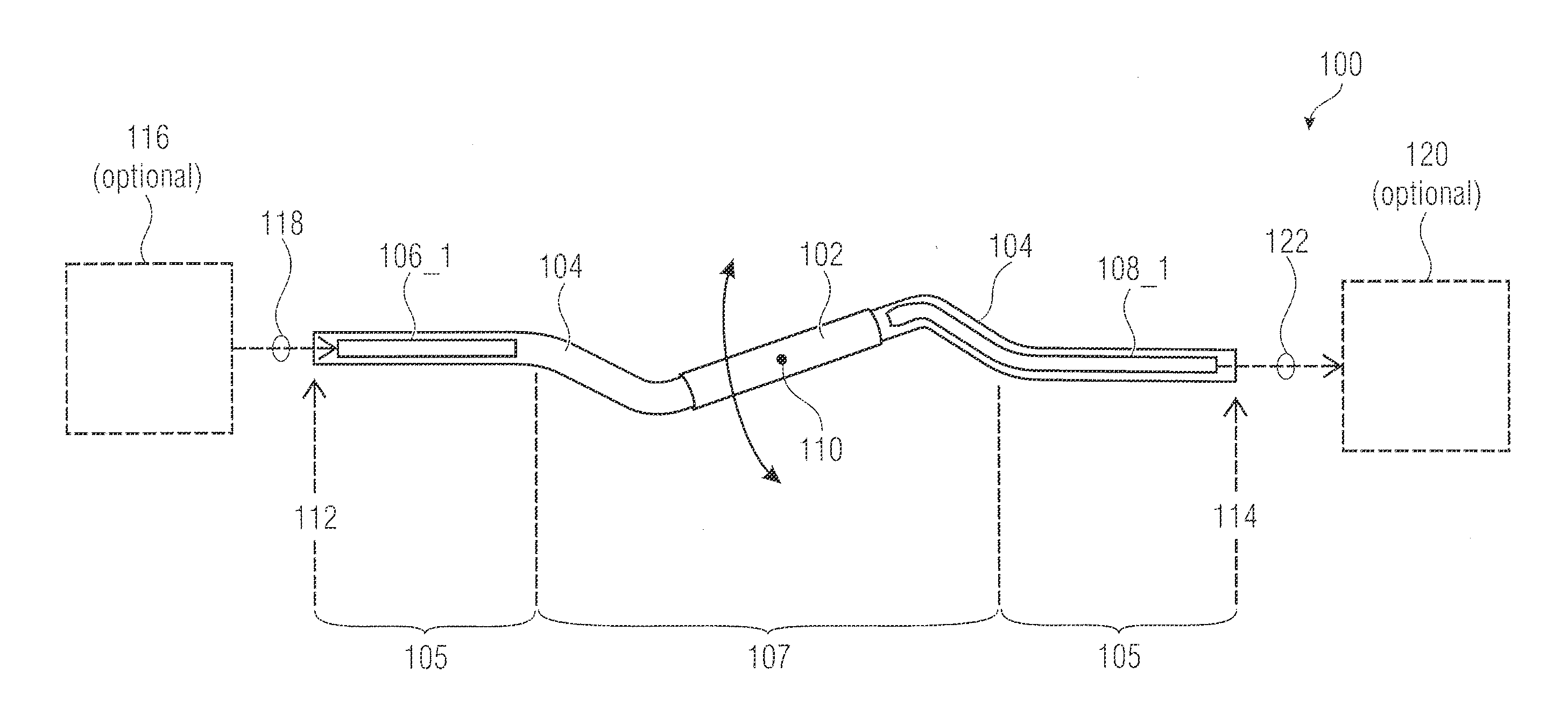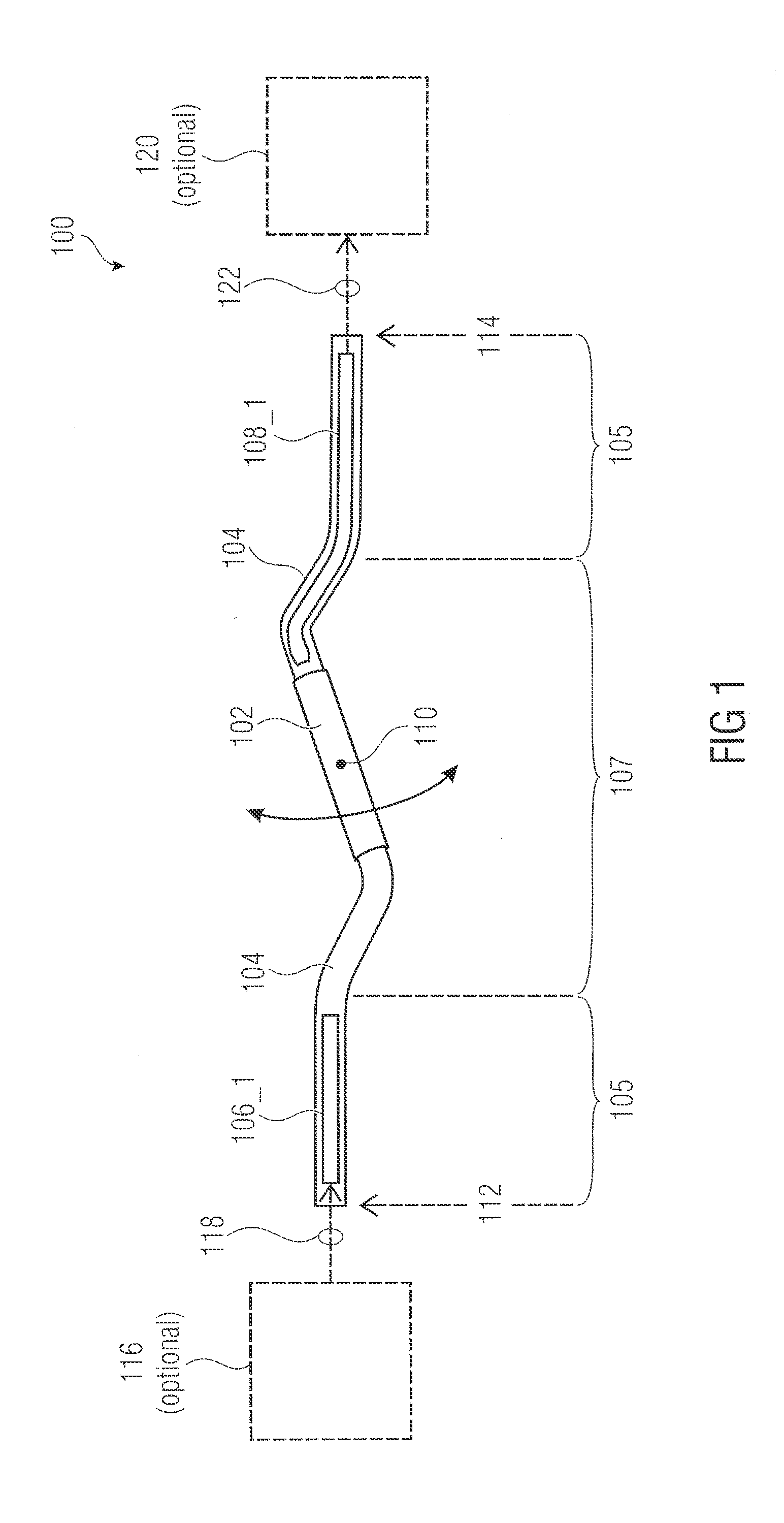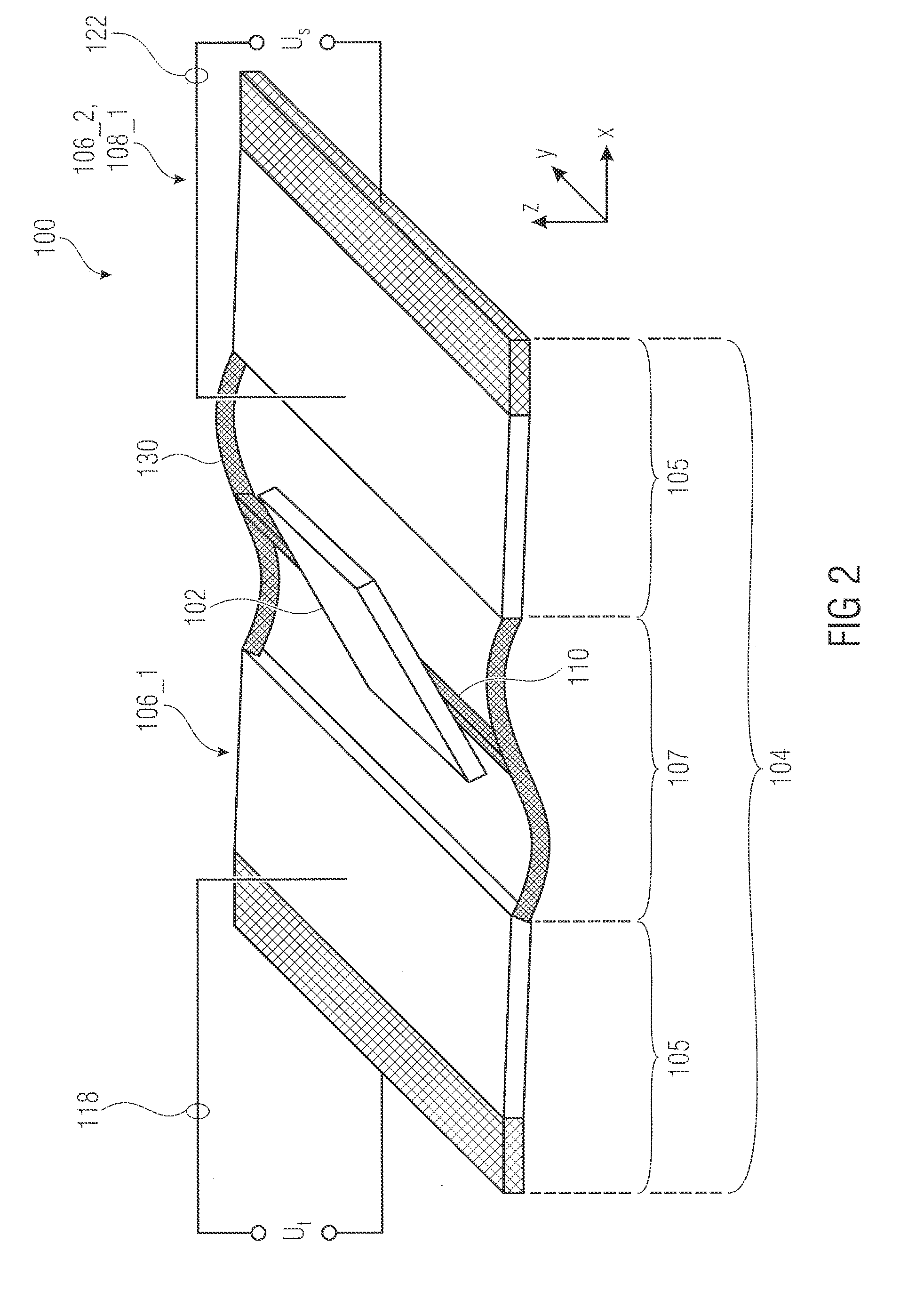Piezoelectric position sensor for piezoelectrically driven resonant micromirrors
a piezoelectric position sensor and resonant micromirror technology, applied in the direction of instruments, optical elements, force/torque/work measurement apparatus, etc., can solve the problems of limited implementation, limited possibilities of detecting the position of resonantly driven or moved mems devices such as resonantly driven micromirrors, and the limitations of above mentioned measurement methods, etc., to achieve a large area
- Summary
- Abstract
- Description
- Claims
- Application Information
AI Technical Summary
Benefits of technology
Problems solved by technology
Method used
Image
Examples
Embodiment Construction
[0034]In the following description of the embodiments of the invention, elements that are identical or have identical functions will be provided with the same reference numerals in the figures, such that their descriptions are interchangeable in the various embodiments.
[0035]FIG. 1 shows an apparatus 100 for resonantly exciting a micromirror 102 and providing a sensor signal 122 dependent on a deflection of the micromirror 102. The apparatus 100 comprises an excitation structure 104 which contains, or supports, the micromirror 102 and comprises at least one piezoelectric actuator 106_1 to 106—n (n=1), the excitation structure 104 being configured to resonantly excite the micromirror 102 to cause a deflection (or oscillation or vibration) of the micromirror 102. In addition, the apparatus 100 comprises at least one piezoelectric sensor 108_1 to 108—m (m=1) for providing the sensor signal 122, the at least one piezoelectric sensor 108_1 to 108—m (m=1) being connected to the excitation...
PUM
| Property | Measurement | Unit |
|---|---|---|
| thickness | aaaaa | aaaaa |
| thickness | aaaaa | aaaaa |
| thickness | aaaaa | aaaaa |
Abstract
Description
Claims
Application Information
 Login to View More
Login to View More - R&D
- Intellectual Property
- Life Sciences
- Materials
- Tech Scout
- Unparalleled Data Quality
- Higher Quality Content
- 60% Fewer Hallucinations
Browse by: Latest US Patents, China's latest patents, Technical Efficacy Thesaurus, Application Domain, Technology Topic, Popular Technical Reports.
© 2025 PatSnap. All rights reserved.Legal|Privacy policy|Modern Slavery Act Transparency Statement|Sitemap|About US| Contact US: help@patsnap.com



